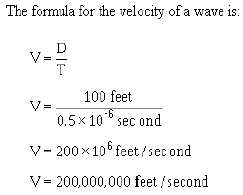3-28
REFLECTIONS ON A TRANSMISSION LINE
Transmission line characteristics are based on an infinite line. A line cannot always be terminated in
its characteristic impedance since it is sometimes operated as an OPEN-ENDED line and other times as a
SHORT-CIRCUIT at the receiving end. If the line is open-ended, it has a terminating impedance that is
infinitely large. If a line is not terminated in characteristic impedance, it is said to be finite.
When a line is not terminated in Z0, the incident energy is not absorbed but is returned along the only
path available—the transmission line. Thus, the behavior of a finite line may be quite different from that
of the infinite line.
REFLECTION OF DC VOLTAGE FROM AN OPEN CIRCUIT
The equivalent circuit of an open-ended transmission line is shown in figure 3-24, view A. Again,
losses are to be considered as negligible, and L is lumped in one branch. Assume that (1) the battery in
this circuit has an internal impedance equal to the characteristic impedance of the transmission line
(Zi = Z0); (2) the capacitors in the line are not charged before the battery is connected; and (3) since the
line is open-ended, the terminating impedance is infinitely large.



